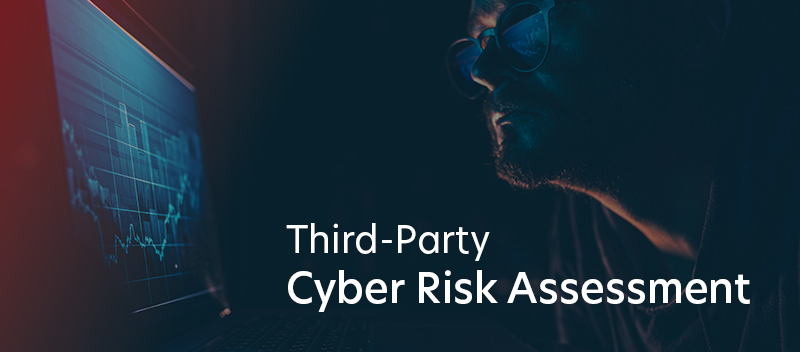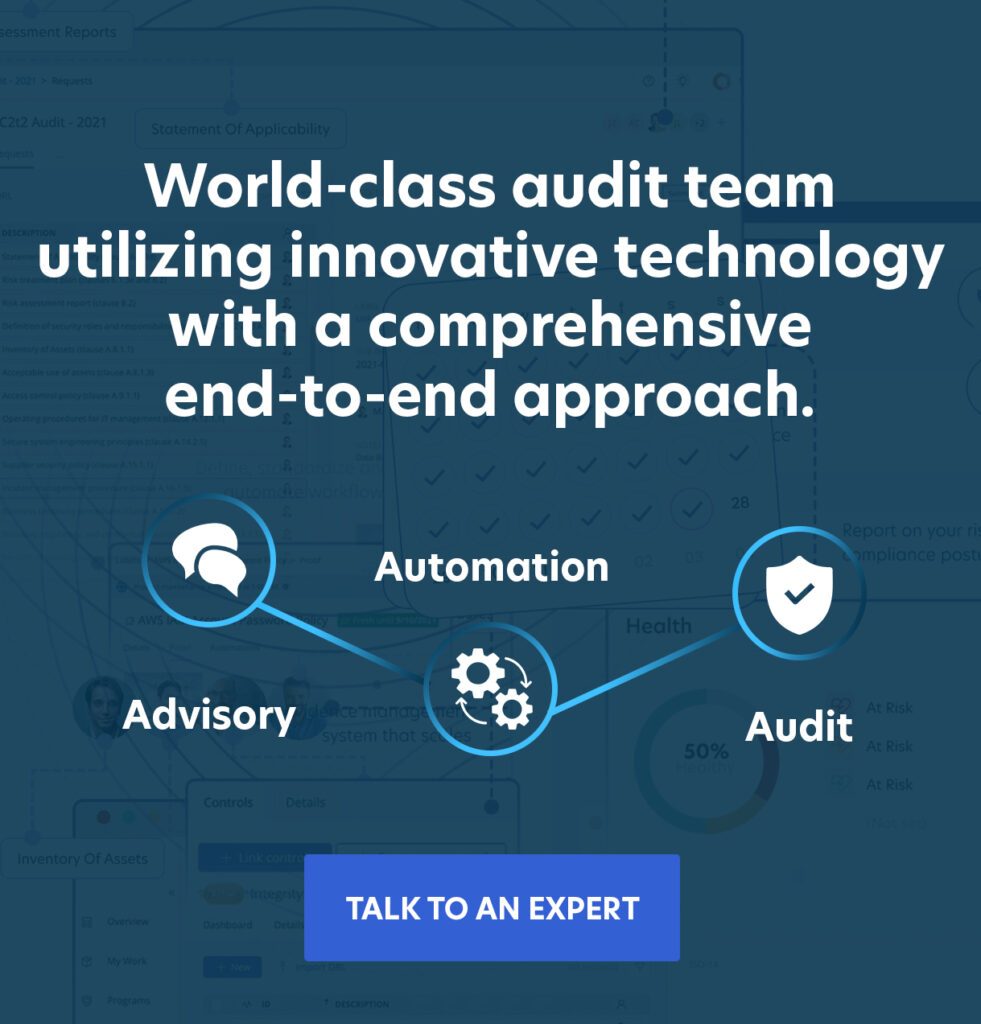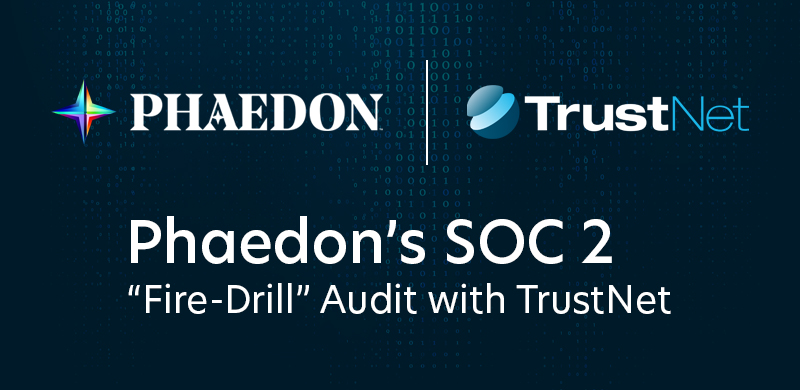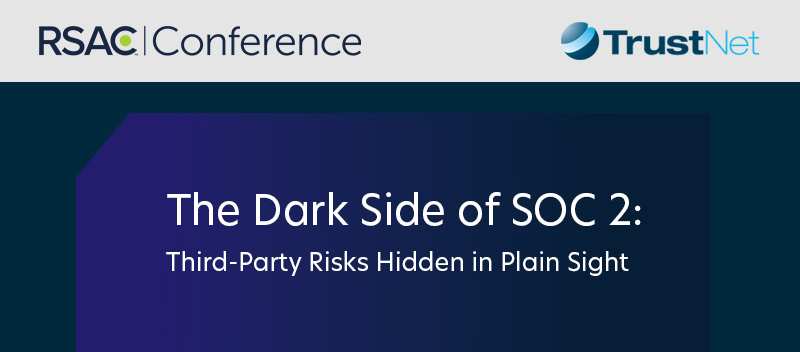Third-Party Cyber Risk Assessment: Strategies for Comprehensive Security Management

Third-party cyber risk assessment is the practice of evaluating the security measures, vulnerabilities, and potential threats posed by your external vendors and partners.
Why does this matter?
-
- Third-party vulnerabilities can expose sensitive data.
- Non-compliance with regulations could lead to fines.
- A single weak link in your vendor chain may result in costly breaches.
Understanding third-party cyber risk is no longer optional for procurement managers, risk professionals, and C-suite executives — it’s a business imperative. This article outlines key challenges, like managing vendor risks and evaluating security postures, while offering actionable strategies to safeguard your organization.
Understanding Third-Party Cyber Risk
Some of the most common types of third-party risks include:
-
- Data breaches: Vendors may have access to sensitive information that could be exposed through weak security systems.
- Compliance risks: Third parties failing to meet regulatory standards can put your organization at risk of costly penalties.
- Operational disruptions: A vendor experiencing downtime from a cyberattack can directly impact your critical services.
The consequences of unmanaged vendor risk are extensive and extend far beyond financial losses. Companies may face legal repercussions, damage to their brand, and infractions that erode customer trust. Your entire cyber security posture might be weakened by ignoring third-party risks, leaving you more open to attacks.
Effectively recognizing and managing vendor risk improves your security plan and fortifies your defenses against cyber attacks.
For more on our Third-Party Risk Assessment services, Click Here
The Third-Party Cyber Risk Assessment Process
Managing third-party cyber risks requires a well-defined strategy. A robust risk assessment process helps minimize vulnerabilities and ensures vendors meet necessary security standards. Here’s how it works:
1. Initial Risk Assessment
Start by conducting a detailed risk assessment to evaluate each vendor’s cyber security posture and potential vulnerabilities. Key steps include:
-
- Identifying security gaps in their processes and systems.
- Assessing compliance with industry regulations and standards.
- Evaluating how a vendor’s risks could impact your operations.
This first step provides a clear understanding of whether a vendor aligns with your security requirements.
2. Vendor Selection and Onboarding
Security must be central to the vendor selection process — not just cost or convenience.
-
- Shortlist vendors that meet your organization’s specific risk requirements.
- During onboarding, set expectations for data protection, compliance, and incident response.
- Ensure contracts clearly define security obligations and performance benchmarks.
A secure onboarding process lays the groundwork for a strong partnership.
3. Continuous Monitoring
Third-party risks evolve, so monitoring must be ongoing.
-
- Conduct regular audits and reviews of vendor performance.
- Use automated tools to identify emerging risks or gaps in compliance.
- Maintain an open dialogue with vendors to address issues proactively.
With consistent vigilance, a well-executed risk assessment strategy fortifies your organization’s defenses and strengthens vendor relationships.
Key Components of a Third-Party Risk Assessment
Conducting a thorough third-party risk assessment requires a combination of strategies to evaluate vendors effectively and mitigate potential threats. Below are the primary components to include in your process:
1. Security Questionnaires
Security questionnaires provide an essential snapshot of a vendor’s cybersecurity practices. These tools collect critical details, including:
-
- Data encryption protocols.
- Incident response plans.
- Employee training programs.
By using security questionnaires, you can identify whether a vendor meets your standards and flag any security gaps early. It’s an efficient way to assess their preparedness before collaborating.
2. Penetration Testing
Penetration testing involves simulating real cyberattacks to find weaknesses in a vendor’s systems. This proactive method identifies weaknesses that security questionnaires could miss. Frequent testing guarantees that suppliers satisfy the robustness required in today’s cyber environment and remain resilient against evolving threats.
3. Risk Scoring Models
A structured risk scoring model helps quantify the risk that each vendor poses. Key factors to evaluate include:
-
- Compliance history.
- System vulnerabilities.
- Past incidents or breaches.
With risk scoring, you can rank vendors by priority, allowing your team to focus on the highest risks while still effectively monitoring lower-risk parties.
4. Compliance Checks
Ongoing compliance checks verify that vendors adhere to necessary regulations and industry standards. In addition to ensuring ethical conduct, this measure reduces legal risks. Conduct frequent audits to adjust to evolving laws or regulations and make compliance a constant endeavor.
Using a combination of these tools will ensure that your third-party risk assessment remains accurate, protecting your organization and its partnerships.
Best Practices for Third-Party Risk Management
An effective Vendor Risk Management (VRM) strategy requires a proactive approach and clear structure. Here are three best practices to enhance your efforts:
1. Establishing a Dedicated VRM Committee
Creating a dedicated committee ensures accountability and consistency in managing vendor risk. Key responsibilities of this group should include:
-
- Defining clear protocols for risk mitigation.
- Regularly reviewing VRM policies.
- Collaborating across departments to address risks effectively.
A structured committee allows your organization to stay focused and prepared.
2. Implementing Automated Monitoring Tools
Automation is essential for managing third-party risks efficiently. By using monitoring tools, you can:
-
- Track vendor performance in real-time.
- Receive alerts for changes in compliance or emerging threats.
- Streamline data collection for risk assessments.
These tools help reduce manual effort while improving overall accuracy.
3. Regular Audits and Assessments
Ongoing audits confirm that vendors meet their contractual obligations and maintain robust security practices. Consider scheduling periodic reviews that focus on the following:
-
- Evaluating the success of current risk mitigation efforts.
- Identifying new risks stemming from operational changes.
- Ensuring compliance with updated regulations.
Maintaining regular oversight may strengthen your VRM framework’s resilience and protect partnerships and operations. By implementing these procedures, your company reduces weaknesses and promotes trust.
Strategies for Mitigating Third-Party Cyber Risks
Below are key approaches to enhance your third-party cyber security efforts:
A. Contractual Safeguards
Contracts are your first line of defense against potential risks. Include clear and enforceable clauses that define critical aspects, such as:
-
- Minimum security requirements.
- Data handling protocols.
- Incident response obligations.
By outlining expectations upfront, you ensure vendors are accountable for maintaining strong cyber security measures.
B. Incident Response Planning
An effective incident response plan prepares both your organization and vendors for handling cyber threats quickly and efficiently. Best practices include:
-
- Establishing clear lines of communication for reporting incidents.
- Conducting joint drills to test response times.
- Defining roles and responsibilities to avoid delays during a crisis.
Proactive planning not only reduces downtime during an attack but also limits potential damage.
C. Vendor Security Training
Empowering vendors through education is a proactive way to strengthen their defenses. Customized training sessions should focus on practical areas like phishing avoidance, system upgrades, and identifying suspicious behavior.
Leveraging Technology in Third-Party Risk Assessment
Technology has become a vital part of efficient third-party risk assessment. Organizations can streamline processes and improve outcomes by integrating advanced tools.
1. AI-Powered Risk Analysis
AI-driven tools enhance the accuracy and speed of risk analysis. These systems can:
-
- Identify emerging threats by analyzing vast data sets.
- Highlight patterns of risk behavior across vendors.
- Offer actionable insights for risk mitigation strategies.
With AI, you can make smarter decisions with minimal manual intervention.
2. Continuous Monitoring Platforms
Continuous monitoring ensures you stay updated on vendor risks in real-time. Key benefits include:
-
- Tracking compliance across evolving standards.
- Detecting policy violations or security breaches as they happen.
- Reducing response times to new threats.
This approach builds resilience by providing uninterrupted oversight.
3. Automated Reporting Tools
Automated reporting simplifies your workflow. Key benefits include:
-
- Consolidating data into clear, actionable summaries.
- Allowing your team to focus on strategic decisions.
- Ensure consistency and reduce human error during risk analysis.
Overcoming Common Challenges in Third-Party Risk Assessment
Organizations often face notable obstacles when managing third-party risks but addressing these challenges head-on can make a significant difference.
1) Resource Constraints
Resource limitations can slow down risk assessments, creating inefficiencies. To tackle this challenge, focus on the following approaches:
-
- Prioritize high-risk vendors to direct attention to where it’s most needed.
- Adopt automated tools like reporting dashboards to cut down on manual tasks.
- Encourage cross-functional collaboration by assigning teams with diverse expertise to share responsibilities evenly.
These steps allow businesses to optimize their resources and maintain steady progress.
2) Data Accuracy and Timeliness
Reliable data is essential for informed decision-making, yet maintaining its precision and relevance remains a pressing challenge. Address it effectively by:
-
- Setting up real-time data streams to ensure your risk assessments stay current.
- Scheduling routine data audits to confirm the accuracy of vendor information.
- Utilizing technology that integrates data collection and validation into a single streamlined process.
By improving data integrity, you minimize errors and reinforce solid risk management practices.
3) Vendor Cooperation
Effective third-party risk management depends heavily on vendor cooperation. Without it, achieving compliance or mitigating risks becomes far more complicated. Strengthen collaboration by:
-
- Building transparent communication channels to clearly outline compliance requirements.
- Offering training opportunities to help vendors improve their risk management efforts.
- Treating them as partners rather than liabilities fosters trust and long-term alignment.
Through mutual respect and clear guidance, vendors become active participants in reducing risks across the board.
Ensuring a Resilient Future in Risk Management
A key component of cyber security is the efficient handling of risks posed by third parties. Organizations may create a more resilient and proactive risk framework by utilizing automated reporting, continuous monitoring, and tackling typical issues, including vendor collaboration, data reliability, and resource limitations.
But the job doesn’t end there. To keep ahead of evolving risks, you must monitor and improve your strategies regularly. Make communication a top priority, invest in technology, and cultivate vendor relationships to build a robust and flexible defense.
Schedule a comprehensive third-party cyber risk assessment today to get started.
Subscribe to the TrustNet Newsletter
actionable cybersecurity strategies, and TrustNet’s cutting-edge solutions.




